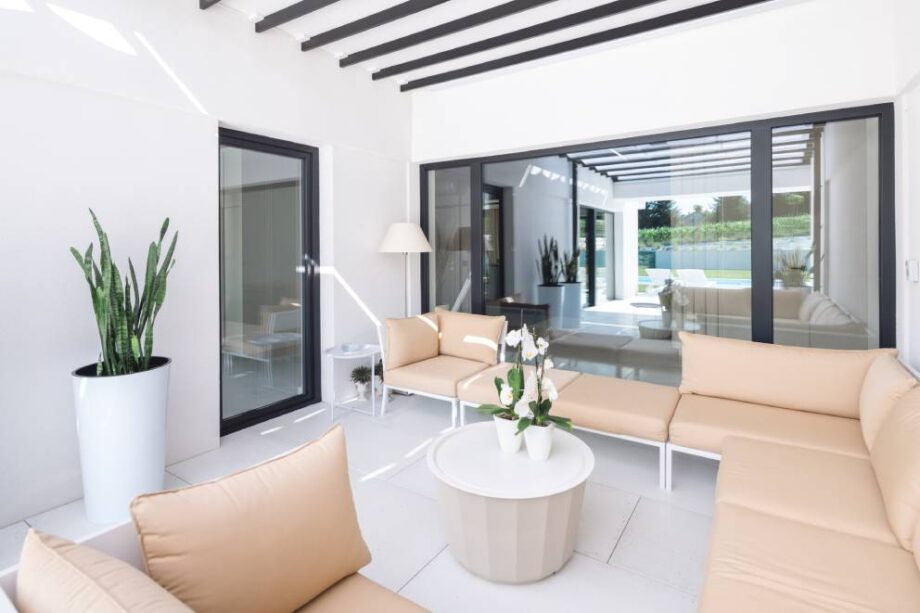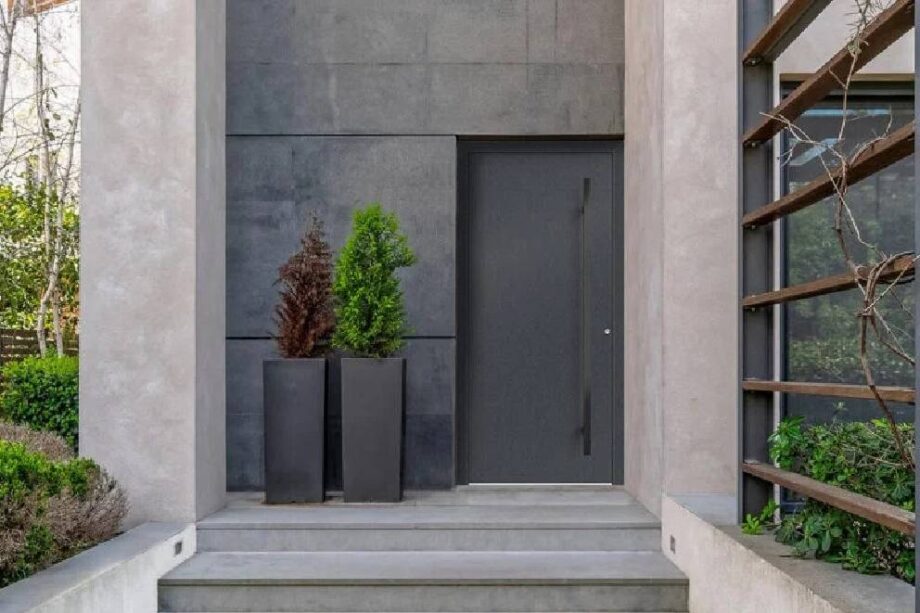Insulated Windows: How They Improve Energy Efficiency

Insulated Tilt and Turn windows are essential for modern homes, offering improved energy efficiency and comfort by minimizing heat loss. However, with so many technical details to consider, many homeowners and investors can feel overwhelmed. At OKNOPLAST, we are dedicated to providing premium, energy-efficient windows. In this article, we’ll explore how our insulated windows help you make informed decisions for better home performance.
The benefits of insulated Tilt and Turn windows
Insulated windows offer a range of features designed to enhance energy efficiency and comfort, making them a valuable upgrade for modern homes.
At the core of these windows is multi-pane glazing. By using two or three panes of glass, they create an insulating barrier that significantly reduces heat transfer. To further improve insulation, gases like argon or krypton are inserted between the panes, offering better thermal resistance than air.
Additionally, warm edge spacers keep the glass panes apart while minimizing heat loss through the edges—an often-overlooked source of energy inefficiency. To boost performance even more, Low-E coatings are applied to the glass. These coatings allow natural light to enter while reflecting heat back into the home, enhancing both comfort and energy savings.
These technologies are especially effective when integrated into high-performance Tilt and Turn windows, like the PAVA window from OKNOPLAST. Designed with multi-chamber profiles and advanced sealing systems, PAVA windows combine thermal efficiency with the versatile functionality of the Tilt and Turn mechanism.
By combining these elements—multi-pane glazing, gas fills, spacers, and coatings—insulated windows provide a comprehensive solution that keeps your home warmer in winter, cooler in summer, and helps reduce energy costs year-round.
These innovations make insulated windows, particularly well-engineered Tilt and Turn models, an excellent choice for homeowners looking to improve energy efficiency without sacrificing comfort or style.
Low-E coatings for windows – 4 things you should know
Low-E coatings are a powerful addition to insulated windows, designed to enhance both energy efficiency and indoor comfort. By controlling how heat and light interact with the glass, these coatings offer numerous advantages that go beyond simple insulation. Let’s take a look at the main benefits of using Low-E coatings.
Energy Savings: For many homeowners, savings are a top priority. These coatings reflect heat back into the home during winter and block it in summer, reducing the need for heating and cooling. This ultimately lowers energy bills. If you use air conditioning in your home, installing windows with Low-E coatings will make a noticeable difference in your energy costs.
Comfort: By regulating indoor temperatures, Low-E coatings help create a more stable, comfortable living environment throughout the year.
UV Protection: Low-E coatings also block harmful UV rays, helping to prevent fading of furniture, carpets, and flooring over time. Prolonged exposure to unfiltered UV rays can damage furniture, fabrics, and materials. Mitigating this risk with Low-E coatings can help you maintain your interiors in pristine condition.
Environmental Impact: The reduced need for energy contributes to a smaller carbon footprint, promoting sustainability by lowering overall energy consumption.
Low-E coatings not only improve the efficiency of your home but also provide comfort, protection, and environmental benefits, making them an invaluable feature in insulated windows.
Which insulating gas is best for your windows?
When it comes to insulating gases used in windows, homeowners have three key options: argon, krypton, and xenon. These gases are commonly used in Insulating Glass Units (IGUs) to enhance thermal performance, but their effectiveness and cost vary.
Argon is the most commonly used gas in window glazing packages due to its balance of affordability and performance. Being six times denser than air, it effectively reduces heat transfer in double-pane windows, making it a practical choice for most homes looking to improve energy efficiency without exceeding their budget.
Krypton, however, is twelve times denser than air, making it ideal for tighter spaces such as triple-pane windows. It offers superior insulation and is often used in high-performance applications where maximum thermal resistance is required. While more expensive than argon, krypton provides excellent energy savings, particularly in colder climates where insulation is critical.
For those seeking the highest level of insulation, xenon is the most effective option. It delivers the best reduction in heat transfer but comes at a significantly higher cost, limiting its use to niche applications where budget is less of a concern.
Each of these gases helps lower a window’s U-value, which measures the rate of heat transfer. A lower U-value means better insulation, and both krypton and xenon excel in this area, offering a significant improvement in energy efficiency over argon. Additionally, insulating gases help prevent condensation, reducing the risk of mold growth and improving the durability of the window frame.

Does the U-Value of a window affect its energy performance?
The U-value is a key indicator of how much heat transfers through a window. Lower U-values mean better insulation, reducing energy loss and increasing efficiency. A window with a low U-value keeps homes warmer in winter and cooler in summer, helping homeowners save on energy bills.
When shopping for windows, the U-value is typically displayed on the window’s label. It is often confused with the R-value, which measures thermal resistance—the higher the R-value, the better the insulation. The two values are inversely related: U = 1/R.
For instance, the OKNOPLAST PAVA window system achieves a U-factor of 0.16-0.29 (in the reference setting), making it ideal for energy-efficient and even passive home construction. This system combines smart design with high-performance glazing to deliver excellent thermal performance.
However, even windows with low U-values require proper installation to perform optimally. Poor installation can create gaps that let heat escape, undermining the window’s efficiency. OKNOPLAST uses solutions like Brickmould, a nail flange that ensures windows are securely installed and function as intended.
By combining low U-values with proper installation, homeowners can maximize the energy performance of their windows.
Insulated windows: before you buy!
Insulated windows are essential for improving a home’s energy efficiency. Features like multi-pane glazing, insulating gas fills, durable frames, and Low-E coatings work together to reduce heat loss and enhance comfort.
At OKNOPLAST, we strive to be a leader in premium insulated windows, offering cutting-edge solutions that meet the highest energy efficiency standards.
If you’re ready to upgrade your home’s insulation, explore our wide range of high-performance windows or consult one of our experts to learn how we can impact your building project or home renovation.
r
References:
- Baetens, R., Jelle, B. P., Gustavsen, A., Grynning, S. (2009). Gas-filled panels for building applications: A state-of-the-art review. Energy and Buildings. https://doi.org/10.1016/j.enbuild.2010.06.019.
- Likins-White, M., Tenent, R.C., Zhai, Z. (2023). Degradation of Insulating Glass Units: Thermal Performance, Measurements and Energy Impacts. Buildings, 13, 551. https://doi.org/10.3390/buildings13020551
We’re here to support you at every stage
Request a quote, consult your project, or simply ask us anything—we’re ready to help make your vision a reality.
Send a request
"*" indicates required fields




